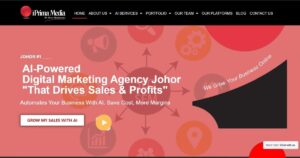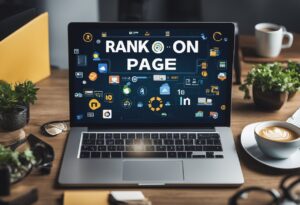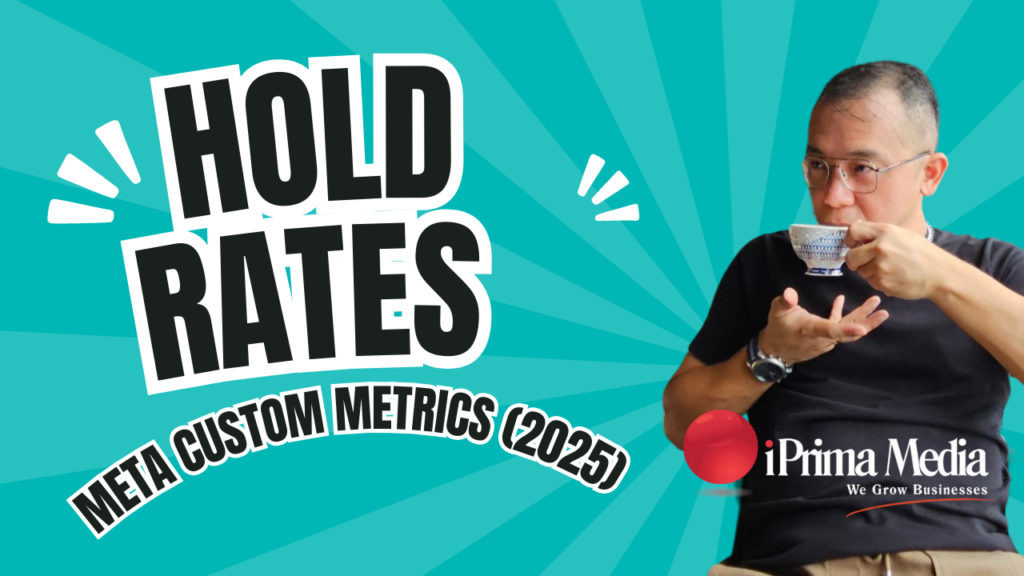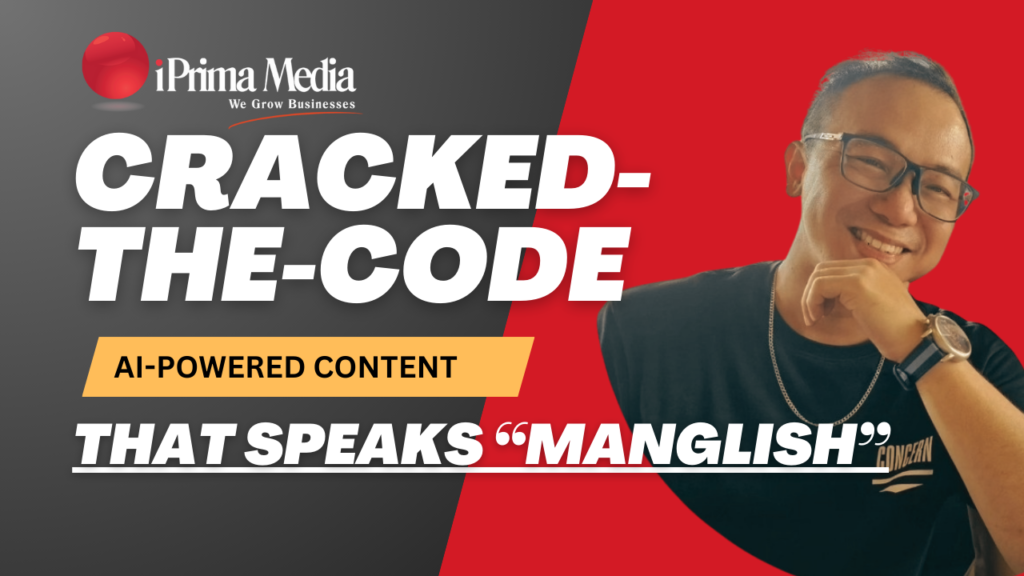In the vast digital landscape, ensuring your website ranks high with search engine optimization is crucial. How do you navigate the complexities of search engine optimization effectively? Enter the SEO checklist – a game-changer in boosting your online presence with search engine optimization, keywords, and landing pages. While some view it as daunting and intricate, others see it as a roadmap to success.
By following this checklist, you can optimize your site's landing pages for SEO efficiently. From search engine optimization keywords to backlinks, each item plays a vital role in enhancing visibility and driving traffic to your platform.
Embrace this keyword tool to streamline your SEO efforts and stand out amidst fierce online competition.
Key Takeaways
Implementing SEO basics is crucial for a strong online presence.
Focus on on-page SEO essentials like meta tags, headings, and keyword optimization for better search engine visibility.
Develop a solid content strategy to attract and engage your target audience.
Pay attention to technical SEO aspects such as site speed, mobile-friendliness, and structured data.
Incorporate effective link building strategies to improve your website's authority and ranking.
Enhance user engagement optimization through user-friendly design, clear navigation, and valuable content.
SEO Basics
Keyword Research
When optimizing your website, seo checklist is essential. Identify relevant keywords for your audience using research tools. Analyze competitor keywords using a tool to gain insights and discover new opportunities. Optimize content with strategic keyword placement and regularly update based on performance.
To enhance your website's visibility, focusing on SEO basics like keyword research and links can make a significant impact.
By incorporating high-volume, low-competition keywords into your content strategically, you can attract more organic traffic.
Regularly refining your keyword strategy based on performance metrics and SEO tools ensures ongoing optimization.
Implementing a robust keyword strategy is crucial in the realm of SEO basics. It not only helps improve search engine rankings but also enhances user experience by providing relevant content tailored to their needs and interests.
Content Quality
Creating unique and valuable content that meets audience needs and keyword is at the core of seo fundamentals. Ensure content is error-free, engaging, and well-written to captivate visitors' attention effectively. Incorporate multimedia elements like images or videos to enrich the user experience.
Maintaining high-quality content involves regular updates and refreshes to keep pages relevant and informative for users over time. By aiming for longer-form content that delves deep into topics, you provide comprehensive information that adds value to readers' knowledge base.
User Experience
Incorporating good SEO practices includes designing a user-friendly website with intuitive navigation features emphasizing clear calls-to-action (CTAs). Optimizing page load speed minimizes bounce rates while enhancing overall user experience significantly.
Ensuring accessibility across different devices by making websites mobile-responsive contributes positively towards improving usability metrics.
Providing seamless browsing experiences free from intrusive pop-ups or ads creates an environment where users can navigate effortlessly.
On-Page SEO Essentials
Title Tags
Crafting unique and descriptive title tags is crucial for each webpage. It's essential to keep them within the recommended character limit of around 50–60 characters. Placing important keywords closer to the beginning of the title tag can enhance visibility in search results.
Remember, avoid keyword stuffing or using misleading titles that don't accurately represent your content.
Regularly reviewing and updating title tags based on performance, relevance, and keyword use is a good practice.
When creating meta descriptions, focus on writing compelling summaries that accurately reflect your webpage content.
Keeping meta descriptions within the recommended character limit of about 150–160 characters ensures they display correctly in search results.
Incorporate relevant keywords naturally into your meta descriptions to boost visibility in search engine rankings.
Using action-oriented language can help increase click-through rates from search engine users, while avoiding duplicating meta descriptions across multiple pages maintains uniqueness.
Header Tags
Utilizing header tags (H1, H2, H3, etc.) helps structure your content for improved readability and SEO optimization. Including target keywords in your main heading (H1) and pages provides context to search engines about your page's primary topic.
Subheadings (H2, H3) are beneficial for breaking down content into logical sections for better organization and user experience enhancement.
Optimizing header tags involves making them descriptive yet concise to cater to both users and search engines effectively; remember to maintain a hierarchical structure with only one H1 per page.
Image optimization plays a significant role in enhancing website performance and SEO ranking factors by compressing images to reduce file size without compromising quality or resolution significantly; this aids in improving page load speed which contributes positively towards user experience metrics such as bounce rates – ensuring images are compressed efficiently will improve loading times dramatically over slower connections like mobile data networks where every byte counts!
Content Strategy
Topic Relevance
Creating keyword-rich content that resonates with your audience is crucial for a successful SEO checklist. Research your topic thoroughly using keyword to offer accurate and current information.
Incorporate relevant keywords in your content to ensure it aligns with the subject matter. Address common queries or pain points related to the keyword, adding value to readers.
Stay updated on industry trends, use page, and make necessary updates to keep the content fresh.
To enhance topic relevance, consider an example where a fitness blog targets new moms. The content should focus on postpartum exercises, nutrition tips, and mental well-being—topics of interest for this specific audience segment.
Technical SEO
Site Speed
Site speed plays a crucial role in optimizing your website page for search engines. Optimizing your website's code, minimizing unnecessary scripts or plugins, enabling browser caching, and using page are essential steps. By compressing CSS, JavaScript, and HTML files, you can reduce file size and improve the loading speed of your site significantly.
Utilizing a content delivery network (CDN) helps distribute your website's content globally, ensuring faster access for users worldwide.
Regularly monitoring your site speed using tools like Google PageSpeed Insights or GTmetrix is vital to identify any performance issues promptly.
This allows you to make necessary adjustments and enhancements to maintain optimal loading times on all devices. For example, if you notice that certain elements on your webpage are slowing down the loading process, you can take specific actions to streamline those components further.
Optimize website's code
Enable browser caching
Compress CSS, JavaScript, HTML files
Utilize a CDN
Regularly monitor with tools like Google PageSpeed Insights
Secure Sockets Layer
Implementing SSL/TLS certificates is essential for enhancing the security of data transmission between your website and users.
Ensuring that all pages on your site are served over HTTPS establishes better security measures and increases trustworthiness among visitors. Regular updates of SSL/TLS certificates help maintain compliance with the latest security standards in safeguarding sensitive information shared through the website.
Displaying trust indicators such as security seals or padlock icons reassures users about the safety of their data while browsing or interacting with your platform online. Monitoring for potential security vulnerabilities proactively enables you to address any threats promptly before they escalate into more significant issues that could compromise user data integrity.
Implement SSL/TLS certificates
Serve all pages over HTTPS
Display trust indicators
Update certificates regularly
Monitor for security vulnerabilities
Structured Data
Structured data markup implementation is a powerful tool in technical SEO strategy as it provides additional context to search engines about the content on your website. By utilizing structured data from Schema.
Link Building Strategies
Internal Links
Internal links are essential for guiding users to related pages on your website. Descriptive anchor text helps users understand where they will be directed. A logical flow of internal links assists search engines in comprehending your site's structure.
Regularly auditing and updating internal links ensures relevance and fixes broken ones. However, avoid excessive internal linking as it may confuse users or devalue specific pages.
Pros:
Enhances user experience.
Helps search engine optimization efforts.
Cons:
Overuse can lead to confusion.
Including relevant internal links within your content is crucial for a seamless user experience and improved SEO.
Backlink Quality
Focusing on acquiring high-quality backlinks from reputable websites is paramount for SEO success. Monitor your backlink profile regularly to identify any low-quality or spammy links that could harm your site's reputation. Building relationships with influencers or industry experts increases the chances of earning natural backlinks.
Creating valuable content naturally attracts quality backlinks from other trustworthy sources while avoiding link schemes or purchasing backlinks preserves the integrity of your SEO strategy.
Key Information:
High-quality backlinks improve website authority.
Maintaining a healthy backlink profile by prioritizing quality over quantity contributes significantly to boosting search engine rankings.
Anchor Texts
When incorporating anchor texts, ensure they accurately reflect the linked content's topic or keywords for better SEO visibility. Including relevant keywords within anchor text naturally enhances search engine optimization efforts without appearing manipulative to algorithms.
Varying anchor text prevents over-optimization issues while providing clear context and guidance to users about the linked content is vital. Avoid using generic terms like “click here” as anchor texts since descriptive phrases enhance both user experience and SEO performance.
Steps for Effective Anchor Text Usage:
Choose descriptive words reflecting linked content.
Incorporate relevant keywords naturally into anchor text.
Vary anchor text to maintain organic appearance.
Incorporating well-crafted anchor texts within your content not only improves user engagement but also boosts overall SEO performance by enhancing keyword visibility.
User Engagement Optimization
Click-Through Rate
To boost click-through rates, focus on creating catchy title tags and meta descriptions. Utilize structured data markup to enhance how your website appears in search results. Experiment with different titles and descriptions through A/B testing to see which ones attract more clicks. Keep an eye on metrics in Google Search Console for valuable insights.
Enhancing your website's visibility in featured snippets can also help drive more clicks. By optimizing these elements, you increase the chances of users clicking through to your site when they see it in search results.
Regularly analyzing click-through rate metrics allows you to understand what works best and make informed decisions about improving user engagement on your website.
Pros:
Increased traffic from organic search results
Better understanding of user preferences through data analysis
Cons:
Requires ongoing monitoring and adjustments
Results may take time to show significant improvements
Bounce Rate
A high bounce rate indicates that visitors are leaving your site quickly after arriving. To reduce this, focus on improving page load speed as slow-loading pages often lead to higher bounce rates.
Ensuring that your content is relevant, informative, and easy to navigate can also help keep visitors engaged longer, reducing the likelihood of them bouncing off the site immediately.
Incorporating engaging multimedia elements like videos or interactive features can capture visitors' attention and encourage them to explore further within your website rather than leaving right away.
Pros:
Improved user experience leading to higher retention rates
Higher chances of converting visitors into customers
Cons:
Requires continuous optimization efforts
Multimedia elements may impact page load speed if not optimized properly
Dwell Time
Dwell time refers to how long users spend on a webpage before returning back or moving onto another site. Creating compelling content that keeps users interested is key for increasing dwell time on your website.
Using multimedia elements such as videos or interactive tools can captivate users' attention, encouraging them to stay longer on the page exploring different sections of the site. Improving page load speed is crucial as slow-loading pages can prompt users to leave prematurely instead of spending more time engaging with the content.
Local SEO Tactics
Local Keywords
Research and target location-specific keywords that relate to your business or audience. Incorporate these keywords in title tags, meta descriptions, headers, and content. For instance, if you own a bakery in Chicago, use keywords like “Chicago bakery” or “best cakes in Chicago.”
Optimize your Google My Business listing by providing accurate details and local keywords. Keep an eye on local search trends to adjust your content strategy accordingly. Utilize platforms like Yelp or TripAdvisor to enhance visibility for local searches.
Monitoring online reviews is crucial for maintaining a positive reputation. Make sure the information is up-to-date across all directories and citation websites. Regularly updating local citations helps reflect any changes in your business information accurately.
Google My Business
Claiming and verifying your Google My Business listing boosts visibility in local searches. Ensure all details such as address, phone number, and hours of operation are accurate. Encourage customers to leave reviews on your profile to build trust.
Using Google Posts can keep customers informed about promotions or events directly through your listing page on Google Search and Maps. Analyzing insights within Google My Business provides valuable data about user interactions with your business online.
Regularly monitoring analytics within Google My Business gives insights into how users interact with your listing online – from viewing photos to clicking directions – helping you refine strategies for better engagement.
Local Citations
Consistency is keyAddress, Phone Number) information across various platforms; ensure accuracy throughout all directories where you're listed. Submit correct business info to relevant directories or citation sites; this increases visibility locally. Seek mentions from authoritative sources related to industry associations; this adds credibility.
Manage online reviews effectively by responding promptly and professionally; this reflects positively on the brand's image. Audit local citations regularly: update them whenever there are changes in business details.
GROW MY BUSINESS NOW
Mobile SEO Techniques
Responsive Design
Responsive design is crucial for SEO. It ensures your website looks good and works well on any device. Use CSS media queries to adjust the layout based on screen size. Regularly test your site on different devices to ensure a consistent user experience. Prioritize mobile-friendly features like touch-friendly buttons and easy-to-use forms. Updating and optimizing your responsive design based on user feedback keeps your site relevant.
A prospective of responsive design includes improved user experience, higher search engine rankings, increased traffic, and better conversion rates.
Improved user experience
Higher search engine rankings
Increased traffic
Better conversion rates
Mobile speed is another critical aspect of SEO optimization. Optimizing images and multimedia elements helps pages load faster on mobile devices. Avoid large files or scripts that can slow down loading times.
Browser caching stores frequently accessed files locally, speeding up loading times further.
Optimize images and multimedia elements
Minimize large files or scripts
Utilize browser caching 4 Monitor speed metrics using tools like Google PageSpeed Insights or Lighthouse
Mobile Speed
To enhance your website's performance in terms of mobile speed:
Optimize all images and multimedia elements for quicker loading times.
Reduce the usage of large files or scripts that could delay page loads.
Implement browser caching to store frequently accessed data locally for faster retrieval.
Keep track of mobile speed metrics with tools such as Google PageSpeed Insights or Lighthouse.
Mobile Usability
Enhancing mobile usability boosts user engagement and improves SEO ranking:
Ensure all interactive elements are easily clickable on mobile screens.
Adjust font sizes for readability on smaller screens.
Avoid using technologies like Flash not supported by some devices.
Social Media Influence
Social Signals
Encouraging social sharing is vital for SEO. Add prominent social sharing buttons on your site. Craft content that connects with your audience to boost shares. Keep an eye on likes, shares, and comments about your brand or posts. Engage actively with followers to build a robust social media presence.
Utilize social media advertising or collaborate with influencers to expand reach. Make it simple for users to share your content by having visible sharing buttons. Create catchy headlines and descriptions that prompt users to share what you post online.
Craft visually appealing multimedia like videos or infographics for more engagement. Interact with followers across platforms to foster a community around your content.
Analyze social metrics regularly to understand which posts are popular and enhance future strategies based on this data.
Content Sharing
Making it effortless for visitors to share your content boosts its visibility online.
Compelling headlines and descriptions entice users into sharing what you publish. Creating engaging multimedia like videos or infographics increases the chance of shares.
Interacting with the audience builds a sense of community around shared content.
Monitoring and analyzing social sharing statistics helps in pinpointing successful pieces of content, allowing optimization strategies moving forward.
Performance Analysis
Analyzing the performance of your website is crucial for improving its SEO. By using various analytics tools, you can gather valuable insights into your website's traffic, user behavior, and conversion metrics. Google Analytics is a powerful tool that allows you to track these aspects effectively. Setting up goal tracking in Google Analytics helps measure specific actions users take on your site, such as signing up for a newsletter or making a purchase.
Utilizing heatmaps or session recording tools provides visual representations of user interactions on your website. These tools help identify areas where users are most engaged or encounter difficulties, allowing you to optimize those sections for better user experience. Implementing event tracking enables you to monitor how users engage with particular elements like buttons or videos on your site, aiding in understanding what drives conversions.
Regularly reviewing and analyzing the data from analytics tools is essential for making informed decisions regarding SEO optimization strategies. By studying the data trends over time, you can identify patterns and make adjustments to improve your website's performance continuously.
Using this information about traffic evaluation, you can gain deeper insights into where your visitors come from and which channels drive the most traffic to your site. Analyzing different traffic sources helps understand which marketing efforts are effective in attracting visitors. Monitoring organic search traffic trends allows assessing the impact of SEO strategies implemented on the site.
Evaluating referral traffic sources unveils potential partnership opportunities with other websites or identifies prospects for acquiring backlinks that can boost search engine rankings significantly. Segmenting user groups based on demographics through analytics tools provides detailed information about different types of visitors and their behaviors on the site.
Setting up goals in Google Analytics enables measuring specific actions such as completing a purchase or submitting a contact form accurately. Defining key performance indicators related to conversions helps gauge the success of marketing campaigns by monitoring metrics like conversion rates and revenue generated.
By using UTM parameters in URLs, marketers can track campaign-specific data accurately, attributing conversions correctly across various marketing channels used by businesses online. Regularly testing and optimizing landing pages forms an integral part of increasing conversion rates by identifying bottlenecks in the conversion funnel that hinder users from taking desired actions.
GROW MY BUSINESS NOW
Future SEO Trends for 2024
Voice Search Optimization
Voice search optimization involves tailoring your content to match the way people speak rather than type. By incorporating long-tail keywords and conversational phrases, you can enhance your website's visibility in voice search results. For instance, if someone asks, “What are the best pizza places near me?” ensure your content includes location-specific keywords like city names or neighborhoods.
To further optimize for voice search, provide direct and concise answers within your content that address common queries users might ask using voice assistants like Siri or Alexa. Focusing on featured snippets is crucial since they often serve as responses to voice searches. Monitoring trends in voice search allows you to adapt your SEO strategy effectively based on changing user behaviors.
Optimizing local business information is also essential for voice search success. Including relevant location-based keywords such as “near me” or specific geographic locations helps improve visibility when users look for businesses nearby using their voices instead of typing.
Incorporate long-tail keywords and conversational phrases
Provide direct answers within content
Optimize local business information with location-based keywords
AI and Machine Learning
Understanding how AI and machine learning algorithms impact SEO is vital for staying ahead in digital marketing strategies. Search engines use these technologies to rank websites based on relevance and user satisfaction levels. Creating high-quality, relevant content that aligns with user intent improves the chances of ranking well organically.
By utilizing natural language processing techniques, you can optimize your content for semantic search – a process where search engines understand the context behind a query rather than just matching keywords. Leveraging AI-powered tools simplifies tasks such as keyword research, optimizing content structure, or analyzing performance metrics efficiently.
Staying updated on advancements in AI and machine learning ensures you remain informed about any changes that could influence future SEO strategies significantly.
Summary
So, there you have it – the essential checklist to boost your website's SEO game. From mastering the basics to diving into technical aspects, optimizing user engagement, and staying ahead of future trends, you've got a solid foundation to work with. Remember, SEO is like tending to a garden; it requires consistent effort and nurturing to see those rankings bloom.
Now, armed with these strategies, go forth and conquer the digital landscape! Implement these tips, track your progress, and adapt as needed. Your website's SEO success is within reach – it just takes a bit of dedication and know-how. Happy optimizing!
Frequently Asked Questions
What are the key components of a strong SEO strategy including search engine optimization, page optimization, organic traffic, and target keywords?
A strong SEO strategy should include elements such as on-page optimization, quality content creation, technical SEO improvements, effective link building, and user engagement strategies. These components work together to improve your website's visibility and ranking on search engine results pages.
How can I optimize my website for local searches?
To optimize your website for local searches, ensure you have consistent NAP (Name, Address, Phone Number) information across all online platforms. Create localized content and utilize Google My Business effectively. Encourage customer reviews and engage with your local community both online and offline.
Why is mobile SEO important for websites?
Mobile SEO is crucial because a significant portion of internet users access websites through mobile devices. Ensuring your website is optimized for mobile improves user experience, boosts search engine rankings, and helps you reach a wider audience effectively in today's mobile-centric world.
How can social media influence impact my site's search engine optimization performance?
Social media influence can positively impact your site's SEO by driving traffic to your website, increasing brand awareness and engagement metrics which are considered by search engines in their algorithms. Sharing high-quality content that resonates with your audience on social platforms can lead to more backlinks and improved search visibility.
What role does user engagement play in improving SEO rankings?
User engagement signals like click-through rates (CTR), time spent on page, bounce rate reduction show search engines that visitors find value in your content. By creating engaging content that meets users' needs & encourages interaction or sharing will help boost rankings & overall site authority.
You Might Be Interested In These Too!
 Autoblogging AI Review: Unveiling Performance, Pricing & MoreFebruary 10, 2024
Autoblogging AI Review: Unveiling Performance, Pricing & MoreFebruary 10, 2024 SEO for Retail Businesses: Enhance Your Website For Malaysia's LocalSeptember 2, 2024
SEO for Retail Businesses: Enhance Your Website For Malaysia's LocalSeptember 2, 2024 JB Website Specialists: Tailored Solutions for Your Online SuccessAugust 2, 2024
JB Website Specialists: Tailored Solutions for Your Online SuccessAugust 2, 2024 Rank on #1 Page Google Fast: 5 Proven SEO StrategiesFebruary 2, 2024
Rank on #1 Page Google Fast: 5 Proven SEO StrategiesFebruary 2, 2024
